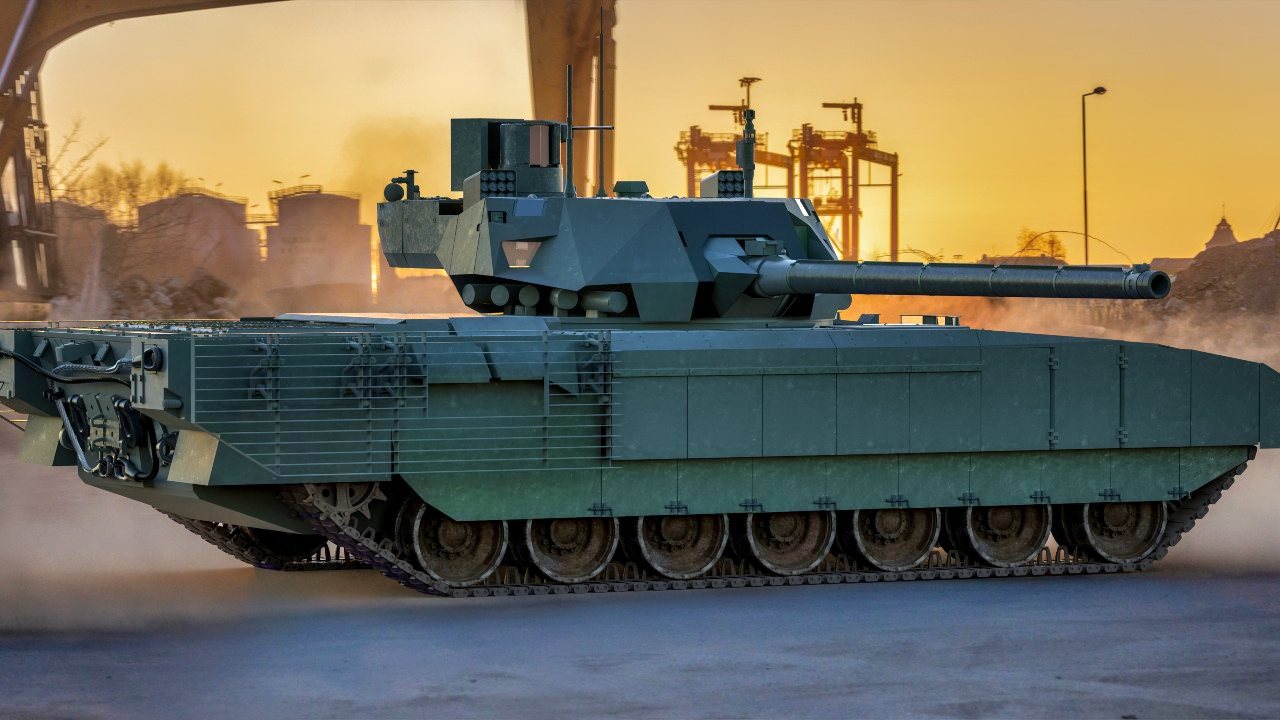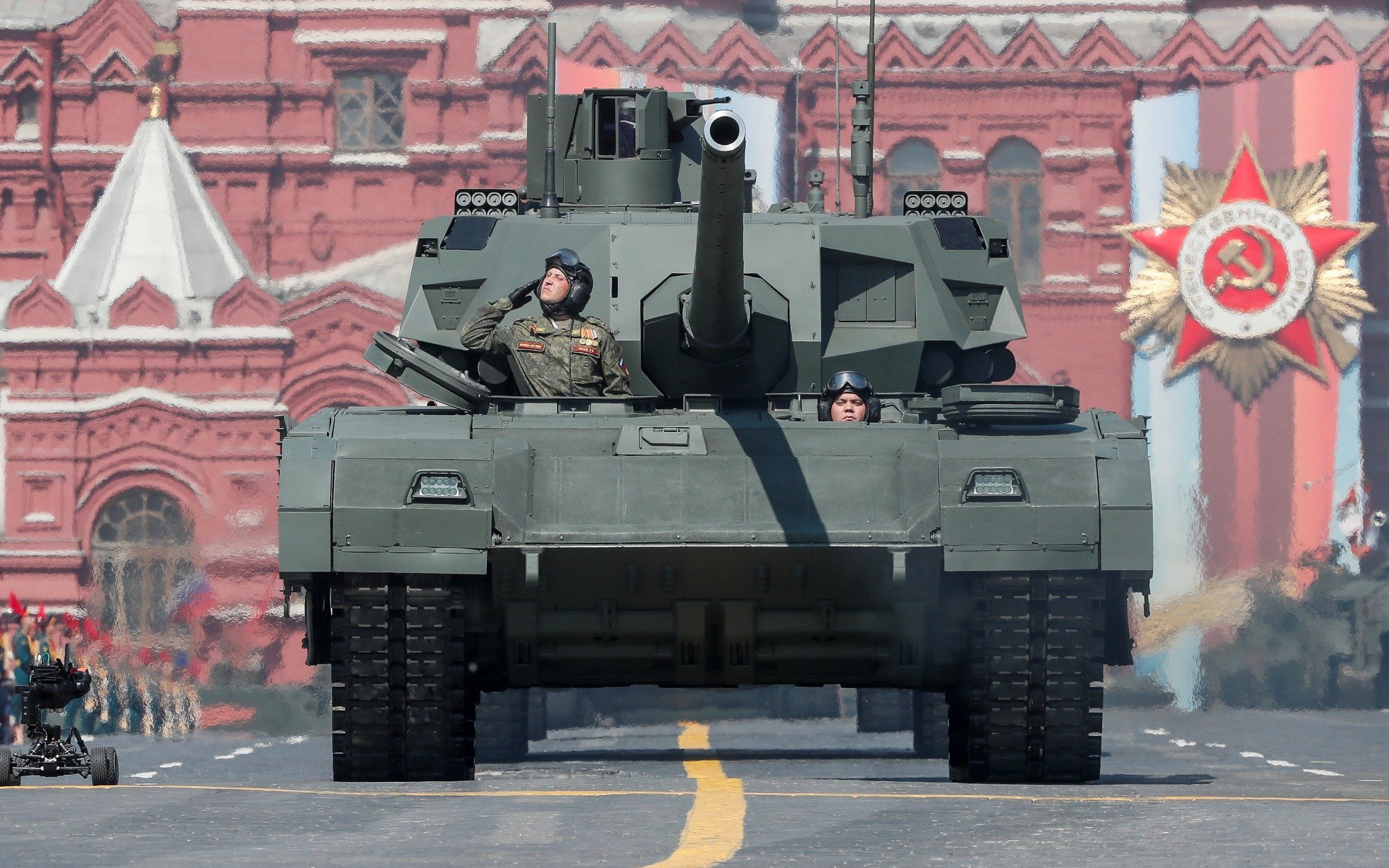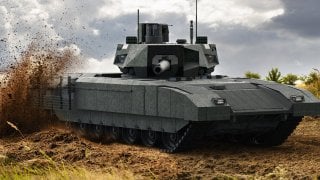Russia's New T-14 Armata Tank 'Had to Be Pulled' From Ukraine War
Russia's Soviet-era main battle tanks, such as the T-55s, T-62s, T-72s, T-80s, and T-90s, have been decimated by Western-supplied anti-tank weaponry during the Ukraine invasion. The deployment of the latest T-14 Armata tanks was short-lived, with claims they were too valuable for continued use.
Summary and Key Points: Russia's Soviet-era main battle tanks, such as the T-55s, T-62s, T-72s, T-80s, and T-90s, have been decimated by Western-supplied anti-tank weaponry during the Ukraine invasion. The deployment of the latest T-14 Armata tanks was short-lived in Ukraine, with claims they were too valuable for continued use.

-Despite the Kremlin's claims of the T-14's superiority, recent reports suggest that upgraded versions are being developed, but economic constraints and international sanctions cast doubt on these plans.
-The T-14, first introduced in 2015, boasts advanced features like an unmanned turret and high survivability but has yet to prove effective on the battlefield.
Russia's T-14 Armata: The Tank That Failed to Make an Impact in Ukraine
Russia’s fleet of Soviet-era main battle tanks have largely failed to gain traction on the frontlines of the Ukraine invasion.
For nearly two and a half years, swaths of T-55s, T-62s, T-72s, T-80s and even T-90 tanks have been absolutely decimated by Kyiv’s western-supplied arsenal of anti-tank weaponry. In an effort to try and reverse its significant MBT losses in the war, Moscow even deployed its latest T-14 Armata tank series last year.
While the Kremlin has touted that its newest MBT iteration is an unstoppable force capable of countering its Western near-peers like the American-made Abrams and British Challenger, the Armata’s short-lived tenure in the war suggests otherwise. According to Russian state-run media outlets, the Armata tanks were prematurely pulled from the frontlines because they are “too valuable.” The CEO of the MBT’s manufacturer Rostec also reiterated that the T-14 is “much superior” to existing tanks.
If the T-14 series was as robust as the Kremlin would like to purport, more of these tanks would still be deployed in the war considering the state of Russia’s rapidly dwindling MBT arsenal. According to a recent report published in the Bulgarian Military, Rostec is allegedly making strides in incorporating several upgrades into the Armata platform. The report suggests that an upgraded T-14 tank design is being developed with a more powerful 152-mm barrel and a stealthier turret which can fire ammunition over a meter long: “This includes advanced high-explosive and thermobaric projectiles with remote detonation, and powerful armor-piercing finned projectiles with a core length of 1024 mm, made by Rosatom. The new 152 mm caliber BOPS is made from very strong and heavy materials, possibly including depleted uranium. Its effective range is around 5 km.”
The T-14 Challenge
Considering the current state of Russia’s economy and manufacturing output, however, these new and improved Armata plans appear murky at best. Since the invasion commenced back in February 2022, sweeping international sanctions imposed on Moscow have sharply impacted the country’s financial growth.
The Kremlin has also poured so many resources in the war over the last two and a half years and is unable to maintain additional output across the board.
If the T-14 series was not “superior” enough to remain on the frontlines of the conflict last spring, it seems unlikely that Russia would pour its limited resources into developing a new variant.
A Brief Overview of the T-14 MBT:
The Armata first debuted back in 2015 when a few of these tank prototypes were spotted in Albino. Designed in accordance with the Object 197 program to replace the T-90 tank, the Armata was officially declared by the Russian Defense Ministry at the country’s annual Victory Day Parade the same year. The new tank is powered by a A-85-3A turbocharged diesel engine, which generates a power output of 1,200 horsepower.
Even though the MBT may not be as robust as the Kremlin would like to claim, the Armata certainly features a range of solid capabilities. Its unmanned turret allows for crew members to be positioned in a highly protected separate compartment that contributes to the tank’s increased degree of survivability.
The Armata can also launch Vacuum-1 APFSDS projectiles and enhanced observation and fire control systems.

While the T-14 Armata may look good on paper, the tank series has yet to prove itself in Ukraine and is unlikely to do so anytime soon.
About the Author: Maya Carlin
Maya Carlin, National Security Writer with The National Interest, is an analyst with the Center for Security Policy and a former Anna Sobol Levy Fellow at IDC Herzliya in Israel. She has by-lines in many publications, including The National Interest, Jerusalem Post, and Times of Israel. You can follow her on Twitter: @MayaCarlin.
All images are Creative Commons or Shutterstock.
From the Vault
Russia Freaked Out: Why the U.S. Navy 'Unretired' the Iowa-Class Battleships
Battleship vs. Battlecruiser: Iowa-Class vs. Russia's Kirov-Class (Who Wins?)


